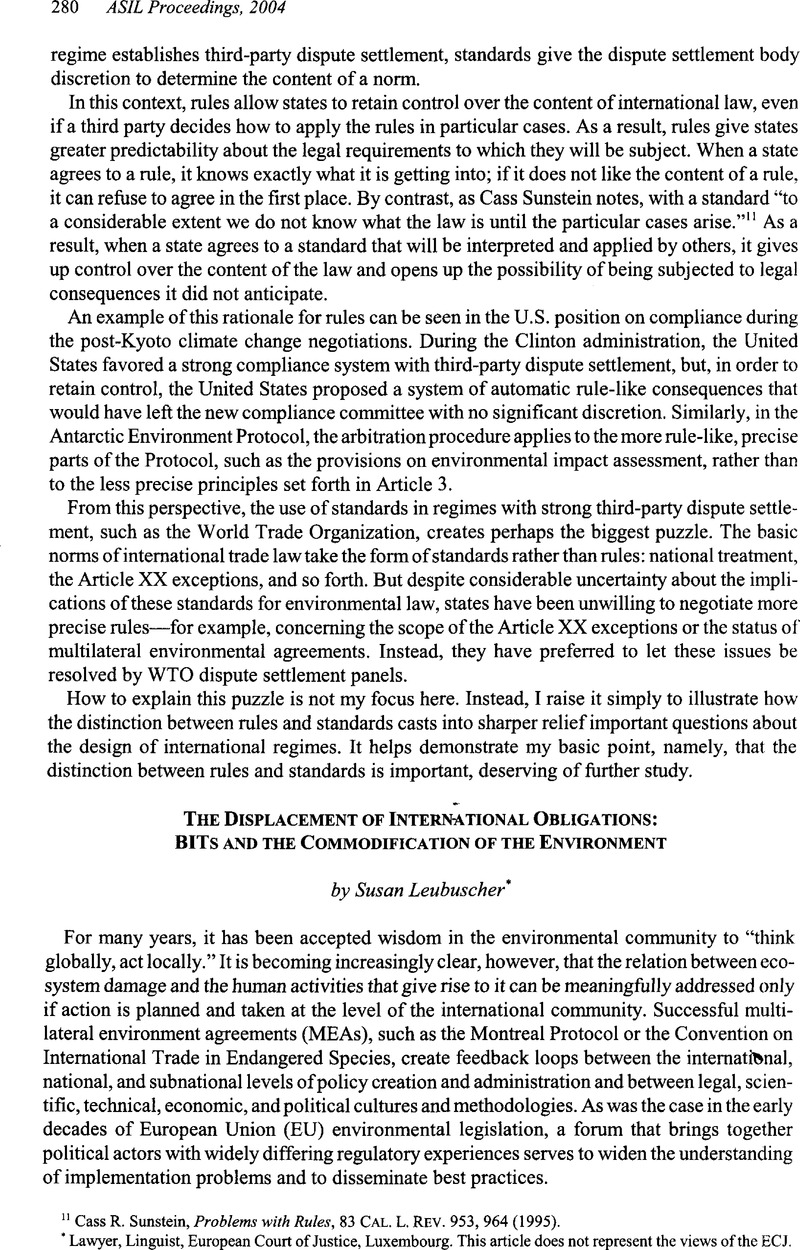No CrossRef data available.
Article contents
The Displacement of International Obligations: BITs and the Commodification of the Environment
Published online by Cambridge University Press: 28 February 2017
Abstract

Information
- Type
- New Directions in International Environmental Law
- Information
- Copyright
- Copyright © American Society of International Law 2004
References
1 Usually effective for the duration of the project, typically, thirty to sixty years.
2 See Dames & Moore, “Environmental Assessment: Chad Export Project (Cameroon Portion),” October 1997. This three hundred-page EIA lists ninety-three references: of these, twelve are studies by or for the lead MNE, a further dozen are World Bank guidance documents, and some fifteen are dictionaries, atlases, and lists of rivers, birds, etc. This relaxed approach carries over into the assessment methodology: To determine whether adverse impacts were significant, the impact was, “wherever possible,” compared to some type of performance standard, policy, or significance criteria. This EIA can be obtained from World Bank Information Centers.
3 The environmental and other (human rights, social, development) effects of contracts have been examined in studies by, inter alia, Amnesty International (<http://www.amnesty.org>); Campagna per la Riforma della Banca Mondiale, Kurdish Human Rights Project, The Corner House, Ilisu Dam campaign and Platform, ‘The Implications of the Host Government Agreement between Turkey and the BTC Consortium’, August 2002 ; Association Tchadienne pour la promotion et la défense des droits de l’homme, Centre pour l’environnement et le développement and Environmental Defense, ‘The Chad-Cameroon Oil and Pipeline Project: A Call for Accountability, June 2000; FERN (<http://www.fern.org-Investment>); Friends of the Earth (<http://www.foe.uk.co/campaigns/corporates>); Human Rights Watch (<http://www.hrw.org>) and IUCN (S.A. Bronkhorst, ed., Liability for Environmental Damage and the World Bank’s Chad-Cameroon Oil and Pipeline Project, Netherlands Committee IUCN, Amsterdam, 2000).
4 Cameroon, for example, was self-sufficient in certain staple crops before its first oil boom, which destroyed rural patterns and led to the country becoming an importer of staple foods.
5 Hernando De Soto, The Mystery of Capital (2000).

